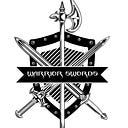Shortswords vs Longswords: A Tale of Two Blades
Throughout European history, two iconic sword types dominated battlefields and social hierarchies: the shortsword and the longsword. While both served as formidable weapons, their contrasting features led to distinct advantages and applications. This article delves into the history, design elements, and combat roles of these Epic Fantasy Blades.
A Legacy Forged in Steel
Swords have been a staple of human warfare for millennia, evolving from crude bronze tools to refined steel weapons. Different cultures developed unique designs based on their fighting styles and materials available. The shortsword and longsword emerged as prominent European variants, each with its own strengths and weaknesses.
Characteristics: Blades, Material, Hilt Shortsword vs. Longswords
Blade Length: Here lies the most fundamental distinction. Shortswords boast compact blades, ideal for swift maneuvering and close-quarter combat. Longswords, on the other hand, offer extended reach and power for strategic strikes in open battlefields.
Material: Both transitioned from bronze and iron to superior steel over time. However, specific compositions and forging techniques varied across regions and eras, impacting their durability and effectiveness.
Hilt Design: Shortsword hilts are typically shorter for agility and quick maneuvering. Longswords have longer hilts for a firmer grip during prolonged engagements and powerful swings.
Shortswords:
- Gladius: The signature weapon of the Roman legionnaire, the Gladius featured a pointed, double-edged blade for thrusting and close-quarters combat. Its compact size and balanced weight made it lethal in tight formations.
- Scimitar: Curved for swift, slashing attacks, the Scimitar originated in the Middle East. This design facilitated effortless maneuvering, making it ideal for mounted combat and skirmishes.
Longswords:
- Arming Sword: Widespread in medieval Europe, the Arming Sword boasted a versatile, double-edged straight blade. Its adaptable design allowed for both thrusting and cutting, making it suitable for various infantry and knightly tactics.
- Claymore: This iconic weapon of the Scottish Highlands is distinguished by its massive, two-handed grip and broad blade. Crafted for delivering devastating blows, the Claymore’s powerful slashing strikes became a symbol of Highland warriors.
Strengths and Weaknesses on the Battlefield
Shortswords:
- Advantages: Superior speed and agility, ideal for close combat and confined spaces. Can be paired with a shield for defense.
- Disadvantages: Lower reach puts the user at a disadvantage against longer weapons. Less powerful blows compared to longswords.
Longswords:
- Advantages: Extended reach keeps the user out of the opponent’s range. Two-handed grip allows for powerful strikes. Versatile for various fighting styles.
- Disadvantages: Can be cumbersome for single-handed use. May not be ideal for use with a shield. Less maneuverable in close quarters.
Conclusion: A Symphony of Steel
The history of shortswords and longswords is intricately linked to the evolution of warfare and societal structures. These Epic Fantasy Blades transcended their practical functions, becoming symbols of power and prestige. Understanding the distinct characteristics of these iconic weapons allows us to appreciate the strategic nuances of historical combat and the rich tapestry of martial traditions that have shaped our world.
